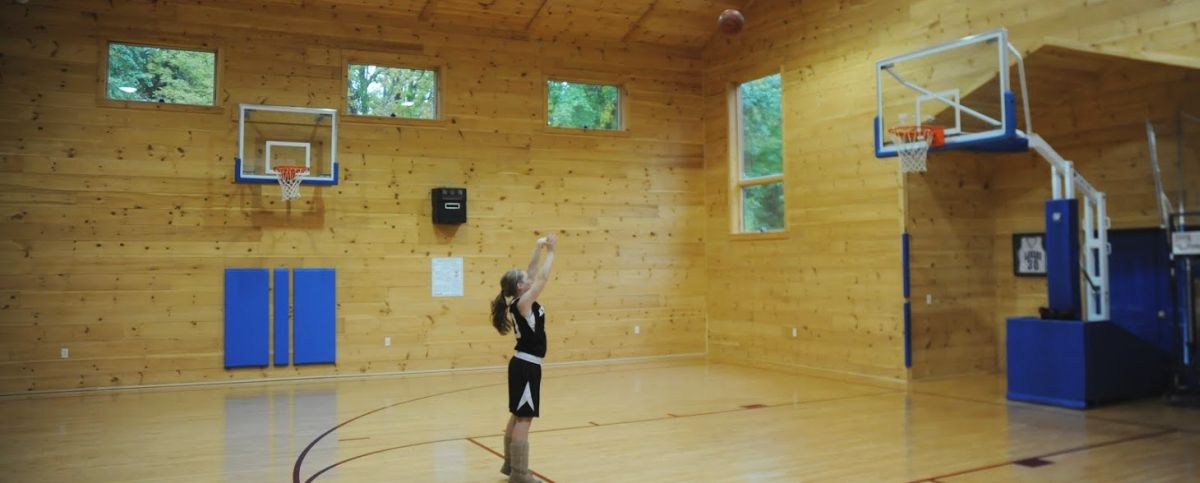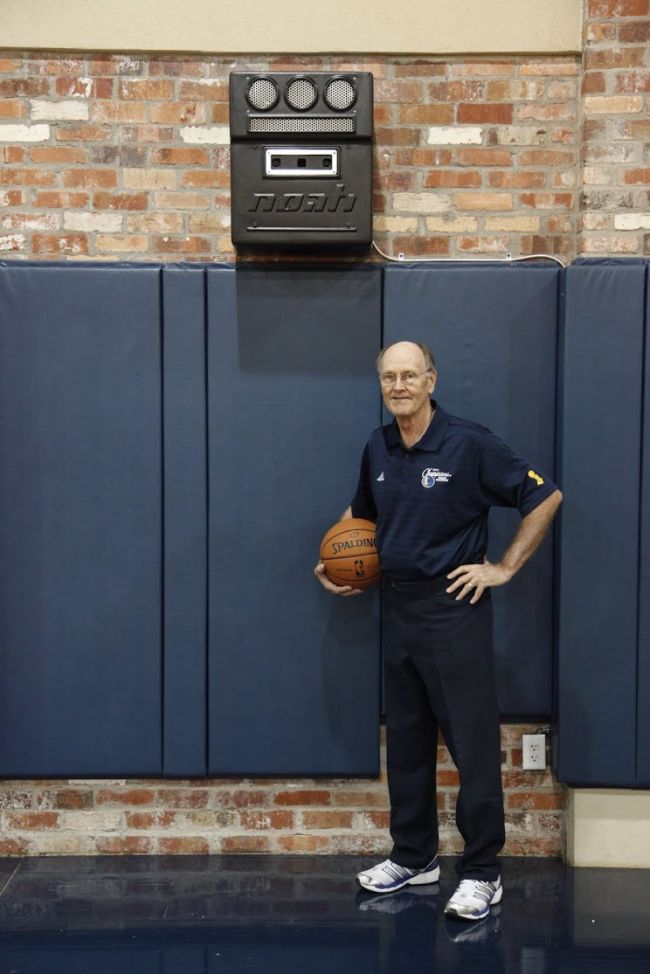This Alabama-built machine knows shooting better than Stephen Curry

In the practice gym for the University of Virginia men’s basketball team, I’m trying to do my best imitation of Stephen Curry.
The Golden State Warriors guard is the deadliest three-point shooter in the history of the National Basketball Association (NBA).
I am a playground hack. I shoot from all over the court: free throws, 18-footers, three-pointers. After each shot, a robot speaks from a black box attached to a wall. “For-tee-two,” it says, flatly enunciating each syllable. I shoot again. “For-tee-three.”
The gym is empty except for me and my rebounder, John Carter, chief executive of Noah Basketball. His robot is telling me the angle of each shot as it falls from its peak toward the rim using data from a sensor mounted above the backboard. The software knows exactly what’s wrong with my shot: I need to heave the ball up higher.
The ideal angle of entry for a basketball shot is 45 degrees, a fact Carter knows from studying millions of shots. He has tracked the shots of grade schoolers, high schoolers, college players, pros in the NBA and Women’s National Basketball Association. At the modified tractor shed in north Alabama that serves as Noah’s laboratory, he has built a machine that shoots a basketball with any arc he chooses.
The results are always the same. The likelihood that any shot will go through the rim increases as the angle of entry gets steeper until the arc reaches 45 degrees, at which point the probability starts to decline.
It didn’t hurt to get verification from the best shooter on the planet. When Steph Curry used Noah’s tracker in May 2014, at a practice gym outside Portland, Ore., his average arc was nearly ideal — 46 degrees. The two-time MVP may add a bit of height to help him shoot over taller players, and Noah’s data show that elite players can afford to be slightly above or below the ideal.
Noah started in a Menlo Park, Calif., driveway 15 years ago. Alan Marty, a venture capitalist and former materials science professor, was trying to teach his middle-school daughter to shoot with a higher arc. At first he used a garden rake taped to a wooden dowel threaded through a step ladder. The contraption got in the way and embarrassed her. This being Silicon Valley, Marty’s next effort involved asking two basketball pals — a machine vision specialist and a rocket scientist — to help him found Noah in 2002. The name is a pun on Noah’s Ark.
The first version of the product, Marty said, was a “computer and speakers on a cart.” It only worked on shots taken from straightaway and could not measure left-to-right accuracy. Still, someone from the Dallas Mavericks heard about the tests at Stanford University and asked to purchase one of the machines when it was ready. The Miami Heat paid $20,000 in 2004 for a prototype unit. The team had just traded for center Shaquille O’Neal and hoped the device might improve his poor free-throw shooting.

Dallas Mavericks shooting coach Gary Boren likes the immediate feedback Noah Instant provides shooters. (contributed)
The latest version of Noah’s technology, called Noahlytics, logs the entry angle of every shot and the location of origin on the court. The sensors can also detect the precise location of the center of the ball when it crosses the rim. Noah uses the same sensor that powers Microsoft’s Xbox Kinect. It’s mounted about 13 feet above the rim and captures the position of the ball 30 times per second. The speaker can be set to call out the shot’s angle, depth, or how far off center it was, left or right.
After about a half-hour and 100 shots at the Virginia gym, the Noah tracker has an uncannily complete picture of my tendencies and deficiencies. Carter sits down with me at a computer on a table behind the baseline and pulls up my results. For a regular Joe, he says, my shot is true, albeit with a slight drift off to the left. But beyond about 18 feet, flaws in my mechanics begin to reveal themselves in flatter arcs and more misses.
The Golden State Warriors, who are facing the Cleveland Cavaliers in the NBA Finals this week, have installed a pair of Noah trackers at their Oakland practice gyms. The Utah Jazz, Dallas Mavericks, Miami Heat and the WNBA’s Minnesota Lynx are also trial customers. At the college level, the University of Virginia and the Citadel are testing it, too.
Kirk Lacob, assistant general manager for the Warriors, said the team is just beginning to put the technology to work. “If somebody is not hitting shots,” Lacob said, “you can get a workout in using Noah and try to figure out: Are they just having a bad week or is there something technically wrong with the shot?”
The next generation of Curry-like shooting prodigies could be raised on this software. Carter said the system will be sold and installed in high schools for $4,800, plus $100 per month for access to the data.
Carter, who grew up in an Alabama farming family and was trained as an engineer, will discuss the mechanics of shooting for as long as anyone will listen. “Only 1 out of 11 high school players are shooting the right arc and depth,” he said. “At the college level, that number climbs to about 50 percent. At the NBA level, it’s probably 85 percent.”
As I shoot in Virginia, he lets the machine do the talking. After only a couple dozen shots, my body is learning to shoot with a higher arc. Without thinking about it, I’m bending my knees more, speeding up my hands and subtly altering my release. It’s exhausting. But 400 shots later, when it’s time to go, I find that I want to keep shooting. I need to hear that robot say “for-tee-five” just one time.














